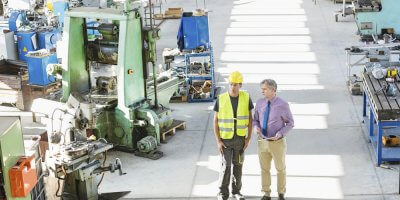
With the rapid advancements of business technology suitable for restaurants, the establishments have to quickly adapt or suffer bad reviews. Source: Shutterstock
Can digital tools really help restaurants delight their customers?
PEOPLE expect restaurants to provide good food. And although that’s most important, it doesn’t protect the industry from the rise of tech-powered disruptions.
Luckily, digitally transforming restaurants can help deliver better consumer journeys and make the business smarter, more efficient, and more intelligent.
It is in the interest of restaurateurs to understand business technology and how it can bring them greater success.
Some believe technology in the people-oriented business will cultivate a hands-off approach and take away the human touch.
However, that cannot be farther from the truth.
What tech does for food establishments is to take the guesswork out of managing customers by relying on a more data-driven approach.
Since pricing and quality are always areas that the food industry competes on, data can better equip owners to make decisions that delight without an actual increase in annual improvement budgets.
McDonald’s recently invested in US$300 million in an analytics firm Dynamic Yield for this very reason. McDonald’s started in 1955 and this was it’s biggest tech-investment ever — and for good reason.
However, not everyone is McDonald’s. Here are three very basic but really game-changing ways restaurateurs can use business technology to up their CX (without breaking the bank):
# 1 | Ensuring consistency in service
Let’s be real: Good servers are hard to find and harder to train.
They are the last-mile when it comes to restaurants and worthy of investments to make sure your CX is consistent.
Bleeding-edge technology such as virtual and augmented reality (VR and AR) can ensure knowledge transfer is more effective across the organization.
For example, the operations manager can introduce data from a real-life scenario via AR technology so that staffs from all outlets are clear on their SOPs.
This is also a cost-efficient way to train new staffs that join the establishment.
# 2 | Letting food be the star
Food should always be the star of the show when it comes to a restaurant. Indeed, that’s the foundation of a good CX for restaurants.
Business technology like enterprise resources planning (ERP) systems can help restaurateurs ensure food is always as best and available as they can be.
Not only can an ERP system help chefs collect and store data about their inventory across its various locations but also manage demand for supplies more effectively.
In the long run, this system can ensure executives are always communicating the right information to business leaders to help them make better decisions.
# 3 | Managing the expectations of customers
Just like any other business, food establishments need to maintain a strong relationship with their customers.
It’s not just about taking orders and serving it to the table.
Restaurants will earn major brownie points if they understand customers better using a customer relationship management (CRM) system.
For instance, if a customer had previously mentioned an allergy, it will be useful to store that data in a CRM system for his next visit (with the customer’s consent).
By doing so, the CX you provide will be memorable as it shows care and concern. Above that, all wait staff will be aware of that data when they look into the CRM system to avoid any miscommunications.
The food business has always been about the people and the experience.
This means to say that restaurants will definitely have to stay relevant to customers by climbing the digital maturity curve.
Restaurateurs can ensure top-notch CX with digital tools so that hungry customers are always coming in.




